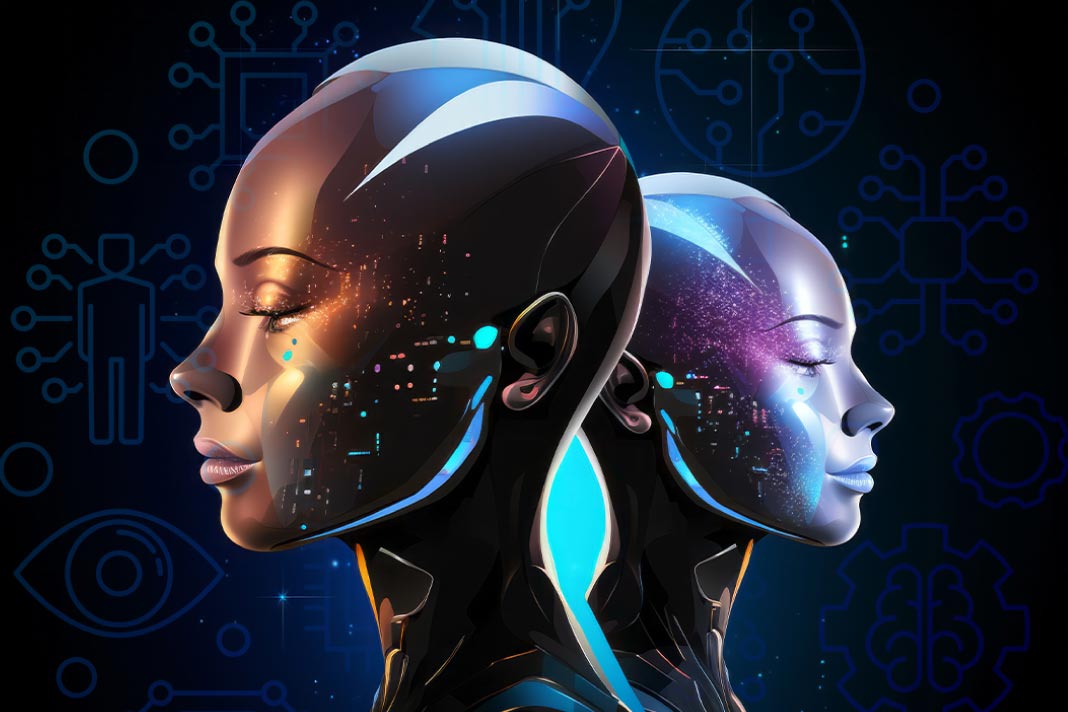Should AI technology be open for all or locked away by corporations and governments? Let’s explore the dangers of secrecy and the power of open-source AI for good, using relatable examples and a positive outlook on the future.
First of all, let’s define what we are talking about here. We have AI technology, and we have AI applications. When you’re talking to ChatGPT, you’re using the AI application, the software package with AI technology under the hood. It also has a login mechanism, the history of chats, the chat window, and a few more things. At the heart of it is AI technology: a small army of AI models, some of which are capable of generating text in response to your messages, others generate images based on text prompts, and so on.
AI technology should be open for the sake of humanity.
The AI applications can be open or closed (it’s business, after all), and some should be regulated. But this is a topic for another time.
I can hear your argument now, dear reader. But if AI technology is open and available to everyone, bad people may use it to hurt good people, right?
Well, yes, they can. However, can you find a single technology that can’t be used to cause harm? Humans are exceptionally creative in this regard: you can harm someone with bare hands or even a word, and indeed, you can use ANY tool at your disposal to do the same.
But there are other reasons to hide the technology behind the closed doors of corporations and governments.
Let’s imagine we have a super powerful AI technology closed and owned by one corporation (not so hard to imagine, isn’t it?). The corporation is very cautious about security. They have a team of super-talented engineers who stay on guard for any hacker assault. For the time being, the technology remains safe.
But then, one day, a middle engineer meets a beautiful lady in need. This lady is charming and desperate and tells him a story of suffering and despair in her home country, ruled by an authoritarian tyrannic government. She barely escaped a horrible fate in jail and now seeks the engineer’s help. Because only powerful AI technology can help the opposition fight back, and they desperately need now to get those models to build their defense – and weapons – on top. And the poor engineer, full of pity and compassion, would find a way to give the technology to the beautiful, needy lady.
The very next day, the technology will be available on the Darknet.
Because no security system is 100% safe, if the hardware and the software parts are hard to crack, there is always a weak wetware piece: a human. Find the correct humans, find a key to them, and the technology will eventually be leaked.
Just think about it: you have a powerful piece of technology available to any bad actor but not to most good folks. It’s like an army of bowers against an army of musketeers. Probably, much, much worse.
Oh my! – I hear you saying, – This is a horrible perspective! Let’s just prohibit the use and development of AI everywhere!
Well, even if we forget for a minute about all the tremendous benefits we can gain from using AI for good, I have to assure you it is too late. The djinni is out of the bottle. People know how to create reasonably powerful models; plenty are already open-sourced. Even if we stop all development, shut all the servers down, and remove all the AI models from public access, will it stop the bad actors from using it?
Quite the opposite, but we’ll be even in a worse position, an army with cubs and spears against an army with plasma guns.
So you see now? The only way to prevent these doom scenarios is to keep the technology open.
I want to finish on a positive note. Do you remember the phenomena of Stable Diffusion?
It is the text-to-image model that people can run on a gamer desktop to generate images from text prompts. As it was open from the beginning, it immediately led to creative innovation in this model’s tooling and finetuning (creating variations). Just look at https://civitai.com/ to see what I mean.
The same applies to any open AI technology today. People are curious and creative. They come up with unexpected ways to use it. They explore the strengths and weaknesses and craft better versions. No dedicated team can do the same amount of creativity as an excited, charged community.
The benefits of using AI for good are tremendous, and we are just at the beginning. In several years, our kids will laugh at all these debates about openness, and they will use AI the same way we use computers and the internet – like a natural part of life.



